What is a Slab?
Slabs create flat, usually horizontal surfaces in building floors, roofs, bridges, and other constructions. Walls can support the slab, and reinforced concrete beams are normally cast monolithically with the slab, structural steel beams, columns, or the earth itself.
Different Types of Slabs Used in Construction:
1. Flat Slab:
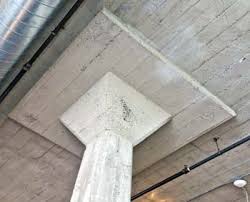
Fig 1: Flat Slab
Courtesy: civildigital.com
The flat slab is a reinforced concrete slab supported by concrete columns or caps. The flat plate is also beamless since it has no columns. Loads are delivered directly to pillars. This type of structure gives the structure an appealing artistic appearance. The simple roof disperses heat more quickly than a standard column plate structure and is considered less flammable in the case of a fire. The plain plate is easier to construct and requires less contouring. The Flat slab must be at least 8 inches thick (200mm).
Uses of Flat Slab:
- Larger headroom or a lower story height and a pleasing design provide a basic roof layer with better air distribution in the forming process. Constructability is simple and efficient.
- This plate is offered in Flat parking plates and is commonly used in parking decks, commercial premises, restaurants, or other situations where beam predictions are not desired.
Advantages of Flat Slab:
- When a deep fake ceiling is not necessary, it reduces floor-to-floor heights.
- It increases the shear strength of the slab.
- The height of the auto sprinkler can be reduced.
- There is less time to construct.
- Reduce the amount of time spent in the slab by reducing the slab’s transparent or efficient length.
Disadvantages of Flat Slab:
- It is impossible to have a large span when using a flat plate technique.
- Not ideal for supporting thin walls.
- High slab bulkiness.
2. Hollow-Core Slab:
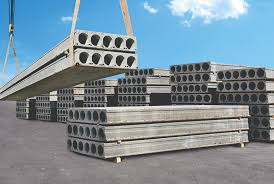
Fig 2: Hollow –Core Slab
Courtesy: kipahprecast.com
It’s a form of the precast slab with cores running through it. These cores reduce slab self-weight and improve structural efficiency, serving as service ducts. It’s ideal for situations where the quick building is required. The span of the hollow core slab units is unrestricted, and their normal width is 120mm, with depths ranging from 110mm to 400mm.
Cranes are typically used to place slab units between beams, and the gaps between units are filled with screeds. Over a 16-meter span, a hollow core slab has been found to hold 2.5 kN/m2. It’s ideal for office, retail, and parking-lot buildings.
Uses of Hollow-Core Slab:
Using a hollow-core ribbed slab decreases construction expenses and the structure’s overall weight. Because of its thickness, a hollow core slab provides excellent fire resistance and sound insulation. It removes the requirement for electrical and plumbing units to be drilled into slabs.
Advantages of Hollow-Core Slab:
- The Hollow base ribbed plate not only reduces building costs,
- It also reduces the overall weight of the structure.
- Making installation easier and requiring less effort.
- Because of its Densities, the hollow core slab also has great fire resistance and sound insulation.
- It eliminates the requirement for electrical and plumbing unit plates to be drilled.
- It also eliminates supplementary formwork or special construction tools to reinforce the blank block masonry.
Disadvantages of Hollow-Core Slab:
- The precast modules must be lifted and moved, which necessitates specific equipment.
- During transportation, the hollow core ribbed slab modules are also harmed.
- Supplying adequate connections between the prefabricated parts becomes difficult.
- For small spans, it’s not cost-effective.
- It will be difficult to restore and fortify.
3. Conventional Slab:-
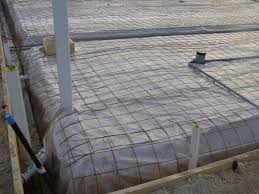
Fig 3: Conventional Slab
Courtesy: pole-arn.infot.com
A standard plate is a plate that is endorsed on beams and pillars. In this kind, the slab thickness is small, but the beam depth is great, and the weight is transferred to beams and columns afterward. It requires more formwork than the simple plate, and there is no need to offer traditional plate-style panel caps.
The standard slab thickness is 4?? (10 cm). 5?? to 6?? inches is recommended if the wood is subjected to frequent high loads, such as engine trucks or rubbish carts. These slabs are divided into two categories based on their length and width: – i) One-way Slabs and ii) Two-way Slab.
i) One-way Slab:
A one-way flat slab, one of the most prevalent slab types in construction projects, a one-way flat slab uses 4 to 6 inches of concrete to sustain large loads. The slab’s name refers to the support structure. It’s used when one direction is supported while the other requires less support.
This slab is a cost-effective and straightforward option for commercial or residential construction. It’s less expensive than other slab kinds, especially for a ground-level structure. One of the biggest drawbacks of one-way flat slabs is that they can’t span as much as other slab kinds. As a result, they are inappropriate for various bridge and ceiling applications.
ii)Two-way Slab:
It is known as a two-way slab because beams support it on all four sides, and the supports carry the weights in both directions. The ratio of longer span to shorter span in a two-way slab is less than two due to the likelihood of the slabs bending to the four supporting edges in both directions.
This type of slab has a length and width of more than 4 meters of length and width. In a two-way slab, distribution bars are installed at both ends to prevent the buildup of strains. These slabs are utilized in the construction of multi-story buildings floors.
4. Waffle Slab:
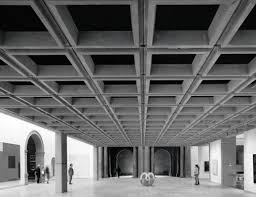
Fig 4: Waffle Slab
Courtesy: prodyogi.com
This type of slab has a length and width of more than 4 meters of length and width. In a two-way slab, distribution bars are installed at both ends to prevent the buildup of strains. These slabs are utilized in the construction of multi-story buildings floors.
Uses of Waffle Slab:
A waffle slab is a slab with holes underneath that resembles waffles. When vast spans are necessary (e.g., auditoriums, cinema halls), it is typically employed to eliminate many columns interfering with space. As a result, thick slabs spanning between wide beams are required (to avoid the beams intruding below for aesthetic reasons). The main reason for using this technique is its great foundation crack and sagging resistance. In comparison to normal concrete slabs, waffle slabs can hold more weight.
Advantages of Waffle Slab:
- Waffle slabs are capable of carrying heavy loads.
- Suitable for spans ranging from 7 to 16 meters, greater spans are also achievable with post-tensioning.
- These systems are light in weight, resulting in significant cost savings within the framework due to the need for a light framework.
- Waffle slabs are frequently used as ceiling and floor slabs.
Disadvantages of Waffle Slab:
- In traditional construction projects, a waffle slab was not used.
- It’s pricey; thus, it’s only cost-effective for large-scale production of comparable units.
- Construction necessitates a high level of supervision and trained labor.
5. Hardy Slab:
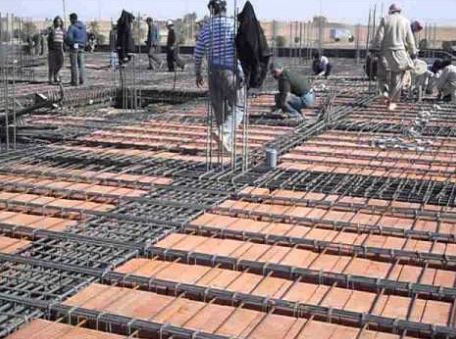
Fig 5: Hardy Slab
Courtesy: theconstructor.org
A hardy slab is a concrete slab made out of full bricks. Hardy bricks are made up of hollow concrete blocks and are hollow bricks. This type of block is used to fill in gaps in the slab. Hardy slabs lower the quantity of concrete in the slab while also reducing the slab’s weight. Compared to traditional slabs, this one has a thickness of 2.27 m.
Uses of Hardy Slab:
Where temperatures are high, a hardy slab is used. The thickness of the slab is increased to resist the heat from the top. The heat from the walls is resisted by utilizing thermal-infused unique bricks. Thermal is the best sunlight insulator.
Advantages of Hardy Slab:
- Construction simplicity, particularly when all beams are buried beams.
- Improved sound and heat insulation.
- The slab weight was lowered by reducing the amount of concrete below the neutral axis.
- Thermal and acoustic insulation of the highest quality.
Disadvantages of Hardy Slab:
- The hollow core ribbed brick units may be damaged if not handled appropriately during shipping.
- For short periods, it is not cost-effective.
- Repairing and strengthening it is difficult.
6. Dome Slab:
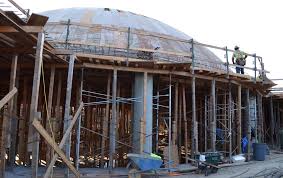
Fig 6: Dome Slab
Courtesy: largoconcrete.com
A dome slab can be used to build a distinctive mosque, temple, or palace dome. A steel support structure is used to sustain this semi-circle concrete structure, and The concrete is reasonably thick. It is meticulously poured into a smooth or textured dome shape utilizing a framework.
Uses of Dome Slab:
One of the key advantages of the dome-shaped system is its capacity to deliver structural carrying capacities comparable to traditional slabs while using less concrete.
Advantages of Dome Slab:
- Domes are highly sturdy and long-lasting.
- They are resistant to fire, water, and wind, making them impervious to hurricanes, tornadoes, fires, and other natural calamities.
- The Monolithic Dome can be measured in centuries, whereas the normal building life is calculated in decades.
Disadvantages of Dome Slab:
- Monolithic domes are made of three materials that are not the most environmentally friendly.
- Falling trees and vandalism can easily destroy the air form, a sensitive membrane. If damaged, water could soak into the underlying insulation and turn into a giant matted sponge.
- Because of the activities, the monolithic dome provides a tight airtight seal, which isn’t always desired.
- Depending on the structure you want to build, a monolithic dome may require additional permits.
7. Arch Slab:

Fig 7: Arch Slab
Courtesy: grabcad.com
It is a form of slab that is frequently used in bridge construction. Bridges are vulnerable to two loads: movement loads and wind loads. Slabs with arches, also known as arch slabs, are used in places where wind loads must be directed and a lengthy curve in the slab’s direction. It prevents the bridge from collapsing due to high winds.
Uses of Arch Slab:
An arch is a curving piece used to span an opening and support loads from above in architecture and civil engineering. The vault’s development was built on the foundation of the arch.
Advantages of Arch Slab:
- It has the capability of spanning a longer distance.
- It can be made out of nearly any material.
- In comparison to other designs, it provides better degrees of resistance.
- It gives you a leg up when hauling heavy loads.
- Over time, it continues to offer assistance without distorting.
Disadvantages of Arch Slab:
- For an effective span, further side support is required.
- It allows you to utilize a finite span length.
- It is a building that necessitates meticulous upkeep.
- It’s a bridge option that isn’t feasible in some areas.
- Completing the job takes a long time.
8. Pitch Roof Slab:
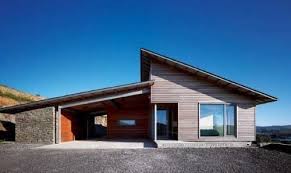
Fig 8: Pitch Roof Slab
Courtesy: civiljungle.com
The pitching slab’s roof is a sloping slab commonly used in resorts for a natural aesthetic. The tiles used in pitch roof slabs are particularly gentle compared to traditional roofing materials. Because of the weight savings, the structural requirements for wood or metal are reduced, resulting in significant cost savings.
Tile sheets are custom-made for each project, saving money on labor and reducing waste on the job site, while the thickness of the slab is determined by the tiles used for 2- 8 inch concrete slabs.
Uses of Pitch Roof Slab:
Pitched roofs allow for natural airflow between the outer layer and the structure, saving energy.
Advantages of Pitch Roof Slab:
- The rain shed effectively closed the roof shed.
- It is quite improbable that it will leak.
- This slab provides internal storage or room space.
- It is quite improbable that it will leak.
- Covering the roof is less expensive.
- The construction material is less expensive if the pitch is standard.
Disadvantages of Pitch Roof Slab:
- Long spans are not recommended for this kind of slab.
- Repairs to slabs, such as plumbing and electrical wiring, are challenging.
9. Post Tension Slab:
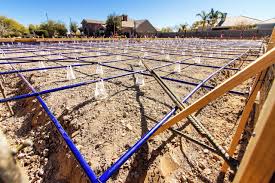
Fig 9: Post Tension Slab
Courtesy: aftconstruction.com
The slab in tension after it has been formed is known as a post-tension slab, and it is reinforced to withstand compression. The post-stress slab’s reinforcement is replaced with cables/metal tendons. Post-tensioning allows you to overcome concrete’s inherent weakness under stress and better exploit its strength in compression.
Uses of Post tension Slab:
Standard reinforcing steel (rebars) provides various advantages over post-tensioning, which is a type of prestressing: It decreases or eliminates shrinkage cracking, necessitating the use of no or fewer joints. When cracks do appear, they are held together strongly. It allows for thinner slabs and other structural elements.
Advantages of Post Tension Slab:
- Post-stress slabs are a fantastic way to build robust buildings for a reasonable budget.
- It allows us to construct slabs on soft or extension soil.
- The fissures that emerge are securely held together.
- It lowers or eliminates shrinkage cracking, obviating the necessity for joints or reducing the number of joints.
- It permits us to develop more complex members for longer periods, such as floors and beams.
Disadvantages of Post Tension Slab:
- Skilled is frequently used to create post-tension slabs.
- The most common issue with using a Post tension slab is that it might result in major disasters if care isn’t taken during the production process.
10. Pre Tension Slab:
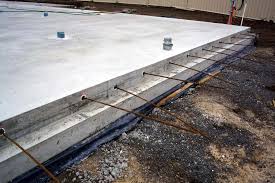
Fig 10: Pre Tension Slab
Courtesy: macchiagroup.net.au
The pre-tension slab is tensioned before being inserted, and it has certain characteristics of a post-tensioning slab.
Uses of Pre Tension Slab:
Pre–tensioning is often done on permanent beds at precasting factories that produce pre-tensioned precast concrete elements for the construction sector.
Advantages of Pre Tension Slab:
Longer span lengths provide more open floor area and parking. Longer spans mean fewer joints, which means less maintenance is required. Because concrete is crack-free, the possibility of steel corrosion and subsequent concrete deterioration is reduced.
Disadvantages of Pre Tension Slab:
- Tension Preparation Slabs require dense, high-strength concrete of good quality.
- It necessitates high-tensile steel, 2.5 to 3.5 times more expensive than mild steel.
- The procedure of prestressing necessitates the use of sophisticated tensioning and anchoring equipment.
11. Low Roof Slab:
A low roof slab refers to the slab above the door for storage purposes. This slab has closed ends on all sides and an open end on one side. This slab is above the door sill level and below the real slab. These are the varieties of concrete slabs that are seen in homes.
Advantages of Low Roof Slab:
- Levels of cooling and heating have been improved.
- Low-cost installation.
- You can implement new technology.
- Maintaining requirements has never been easier.
Disadvantages of Low Roof Slab:
Low-slope roofs alter the way water drains from a building. Because high-pitched roofs don’t allow water to collect, asphalt shingles and other overlapping materials perform effectively. Standing water soaks between these materials on a roof with a lower pitch.
12. Cable Suspension Slab:

Fig 11: Cable Suspension Slab
Courtesy: midasbridge.com
If the slab span is particularly long, we use a cable suspension slab supported by cables like London Bridge and Howrah Station. We supply a column every four meters; however, we provide a column every 500 meters in a cable suspension slab. This slab is used when the span is longer, and the formation of columns is difficult. A cable holds the slab and connects it to the cable column.
Uses of Cable Suspension Slab:
Where the span length is longer and more challenging in building columns, this type of slab is given. Cables connect the slabs to the columns.
Advantages of Cable Suspension Slab:
- It is possible to achieve long distances.
- Because of the cable system, it is adaptable.
- It’s built-in a straightforward way.
- In construction, fewer materials are needed.
Disadvantages of Cable Suspension Slab:
- There is a limited length for cable-stayed bridges to consider.
- In certain settings, this design option may become unstable.
- Inspection and maintenance of cable-stayed bridges can be difficult.
- It’s a design that can be prone to rust or corrosion.
13. Projected Slab:
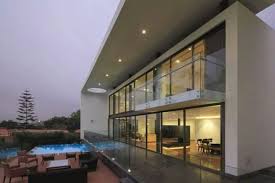
Fig 12: Projected Slab
Courtesy: iceted.com
A projected slab is generally included in a covered drop-off entrance. At one end, this long slab is attached to a building, while at the other, it swings freely. The purpose is to keep automobiles and pedestrians safe from the sun and bad weather. The slab employs a cantilever design to balance the weight and sustain it safely from a single end.
Uses of Projected Slab:
These slabs are commonly found in hotels, universities, and event halls and are used as a drop-off and pick-up zone and a loading and unloading zone.
Advantages of Projected Slab:
- It lowers the structure’s total height.
- It is simple to install the reinforcement of projected slabs since they may be enlarged.
- Projected slabs can raise heavy loads.
- They also have a higher level of quality control.
14. Ground Slab:
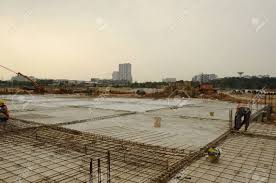
Fig 13: Ground Slab
Courtesy: 123rf.com
The slabs poured directly into excavated trenches in the ground are known as ground slabs. They are completely reliant on the existing terrain for support. A sturdy foundation must support the concrete slab.
Uses of Ground Slab:
Ground-bearing slabs, also known as “on-ground” or “slab-on-grade” slabs, are often used for ground floors in residential and commercial buildings. It is a cost-effective and time-saving construction approach for locations with non-reactive soil and a low slope.
Advantages of Ground Slab:
- Concrete slab foundations are more frequent in warm-climate regions, where the ground is less likely to freeze and damage the foundation.
- There are several advantages to building or purchasing a home on a slab, including financial savings and a reduced danger of damage in certain situations.
Disadvantages of Ground Slab:
There are several advantages to building or purchasing a home on a slab, including financial savings and a reduced danger of damage in certain situations. The disadvantages include the possibility of having to install heating and cooling systems on the ground floor, which eats up living space. There’s also the possibility of cracks.
15. Sunken Slab:
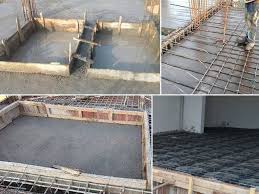
Fig 14: Ground Slab
Courtesy: constrofacilitator.com
A sunken slab is utilized below the washrooms to cover sewer pipes, WC pipes, and other equipment. Because the water pipes are hidden beneath the earth, care must be taken to avoid leaks.
For leakage or moisture, the slab is properly waterproofed and treated. Following the installation of the sewer lines, the slab is filled with broken bricks, coal, or other suitable lightweight material.
Uses of Sunken Slab:
Bathrooms, toilets, washing machines, and water closets all use this slab style. The objective of a sunk slab is to prevent water from spilling over into the surrounding slabs from the sunk slab.
Advantages of Sunken Slab:
All plumbing pipes are concealed within the slab with such slabs.
Special plumbing fixtures in sunken strips are not required for noise in the bathroom.
These slabs provide a good plumbing system and can also be utilized to create a safety system.
Disadvantages of Sunken Slab:
- The slab’s height has been reduced.
- Compared to Sunken Slab, the construction of the slab, waterproofing, and brickbat takes longer.
Conclusion:
The various types of slabs in a typical structural system prevent transverse forces on their plane, allowing for higher structural efficiency.
References:
1. LCETED. (2001, April 3). Different types of slabs in construction | Its uses | Pros & Cons -lceted LCETED INSTITUTE FOR CIVIL ENGINEERS. LCETED INSTITUTE FOR CIVIL ENGINEERS; www.lceted.com. https://www.lceted.com/2021/04/different-types-slabs-in-construction.html
2. mohdsuhel. (2021, February 5). Types of Slabs in Construction. CivilMint.Com; civilmint.com. https://civilmint.com/types-slabs-construction/
3.What is Slab? Types of Slabs- civilengineer-online.com. (2019, September 13). Civilengineer-Online.Com; civilengineer-online.com. https://civilengineer-online.com/what-is-slab-types-of-slabs/
4. 16 Different types of slabs in construction | Where to use? (2017, May 21). CIVIL READ; civilread.com. https://civilread.com/16-different-types-slabs-construction/
5. Rajput, K. (2021, April 5). 19 Different Types of Slabs in Construction | What Is a Slab. CivilJungle; civiljungle.com. https://civiljungle.com/types-of-slabs/
6. 7. Types of Slabs in Construction (20 Different Types). (2021, February 24). Constructionor.Com; constructionor.com. https://constructionor.com/types-of-slabs/
If you have a query, you can ask a question here.


